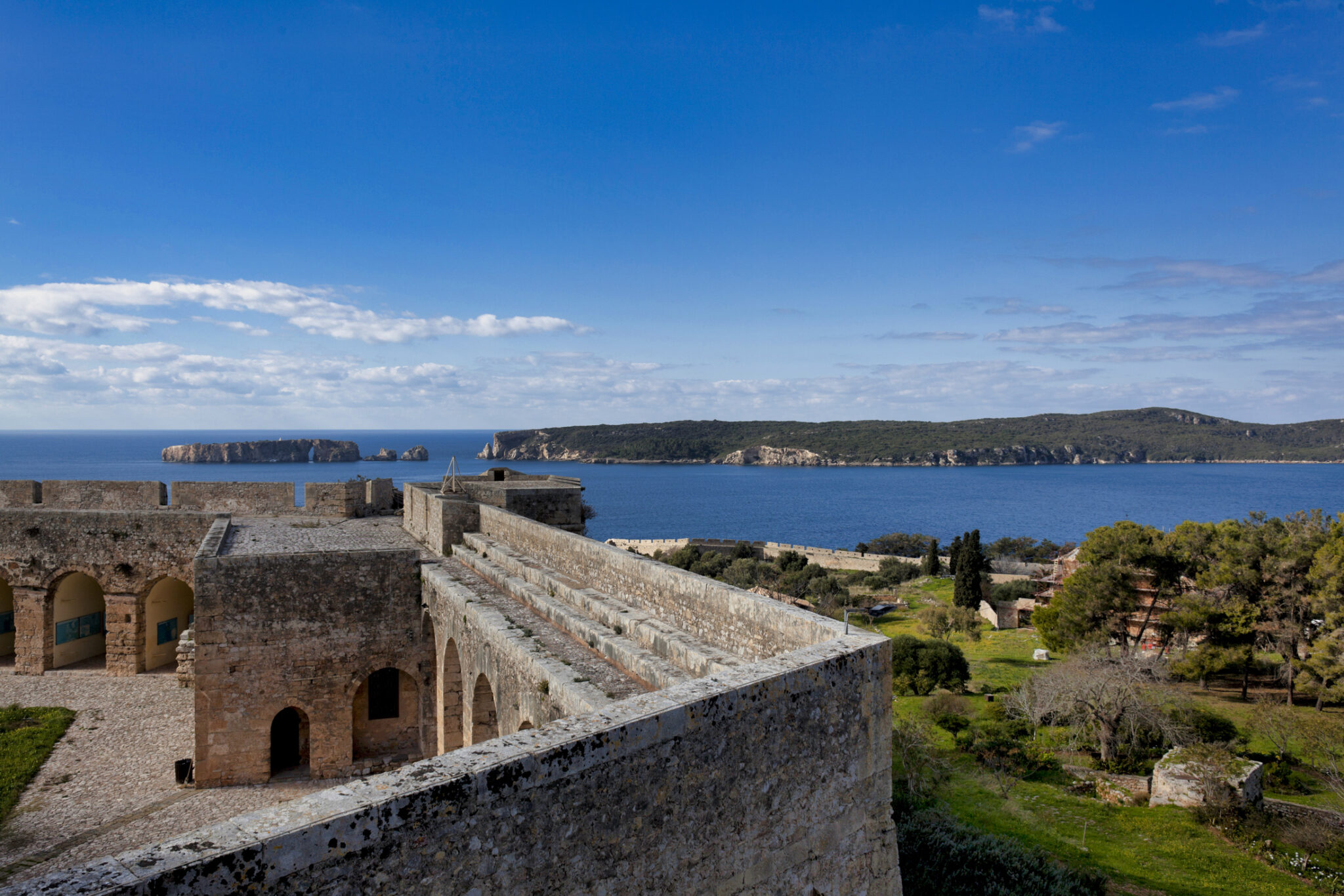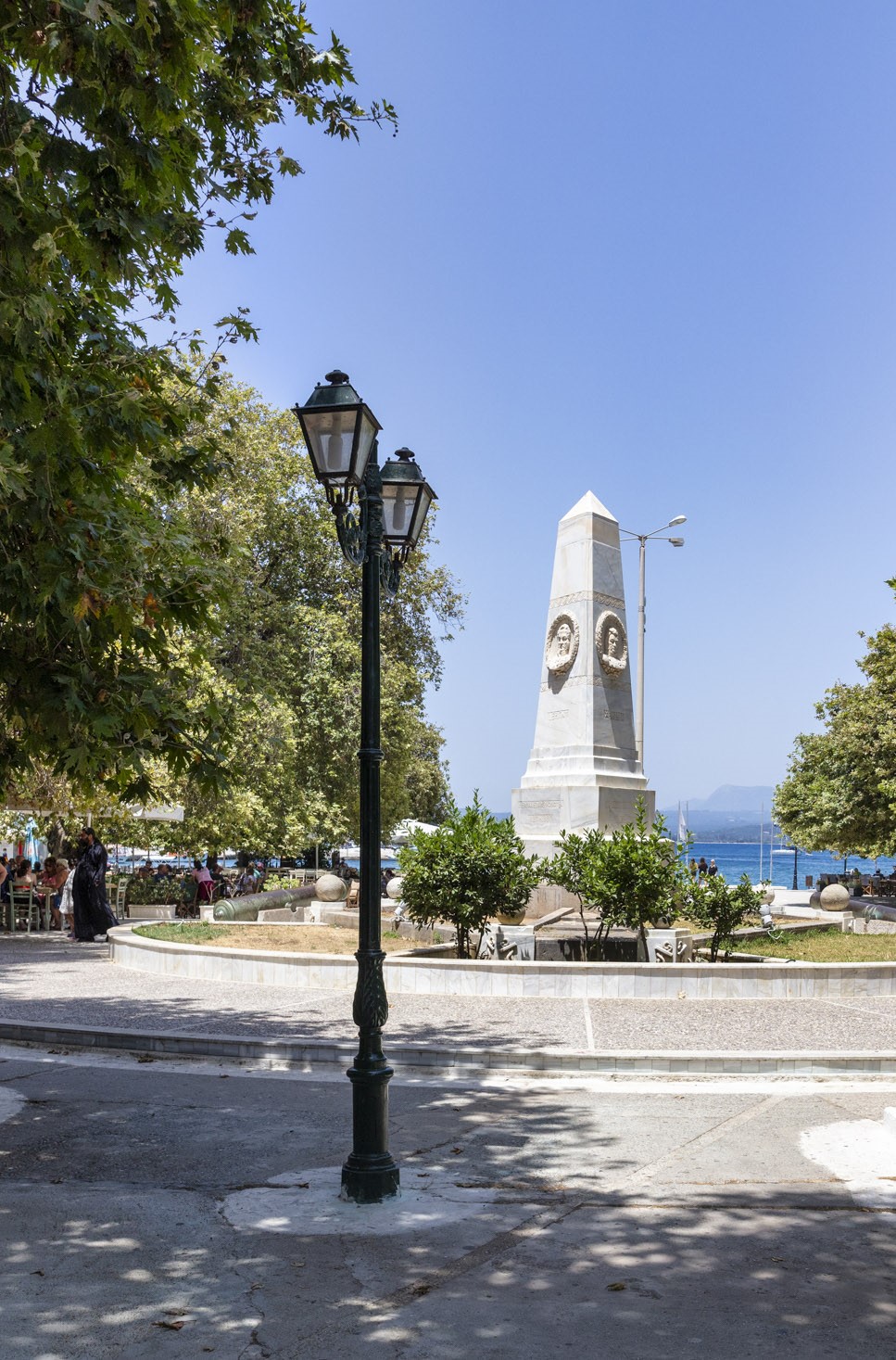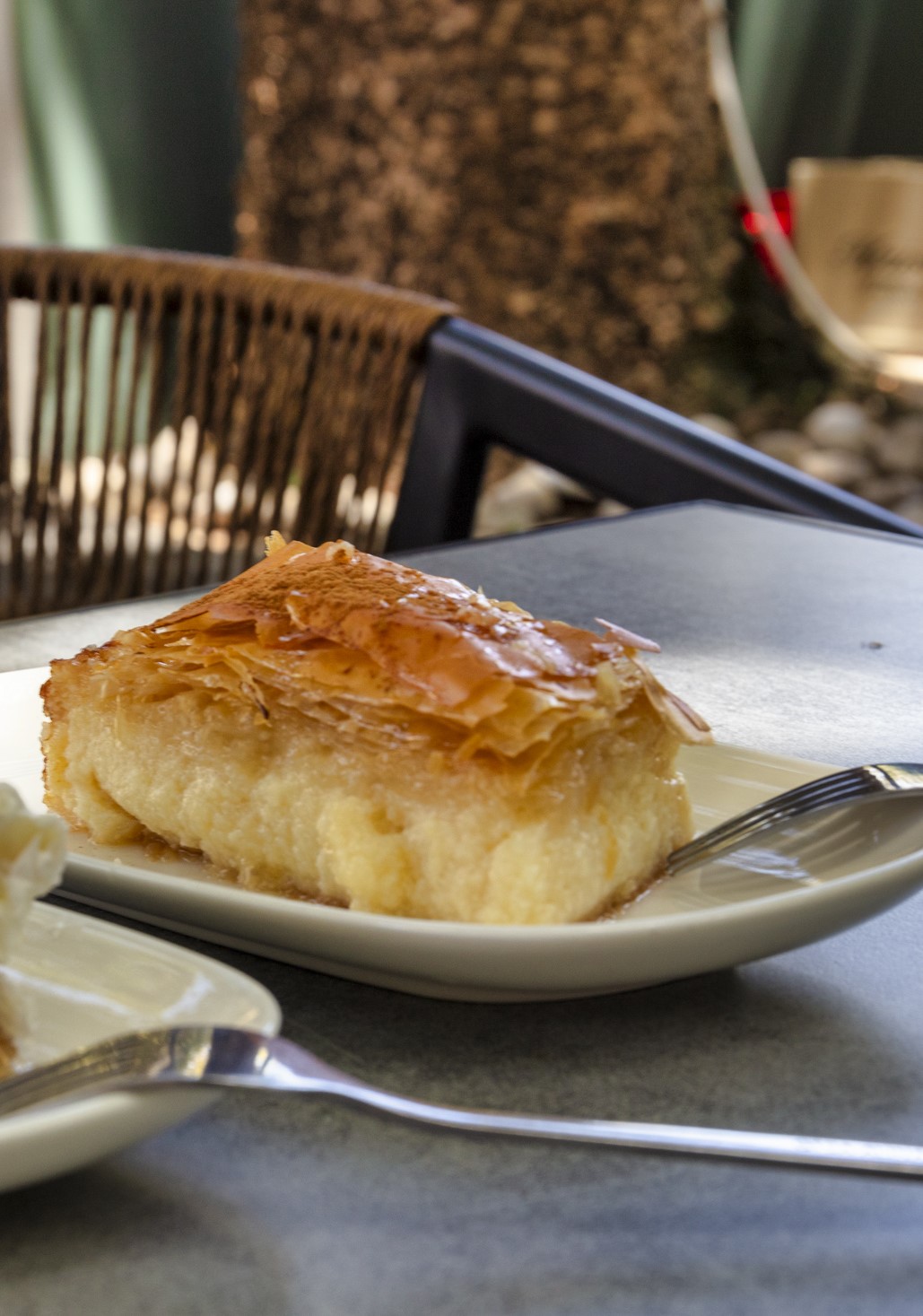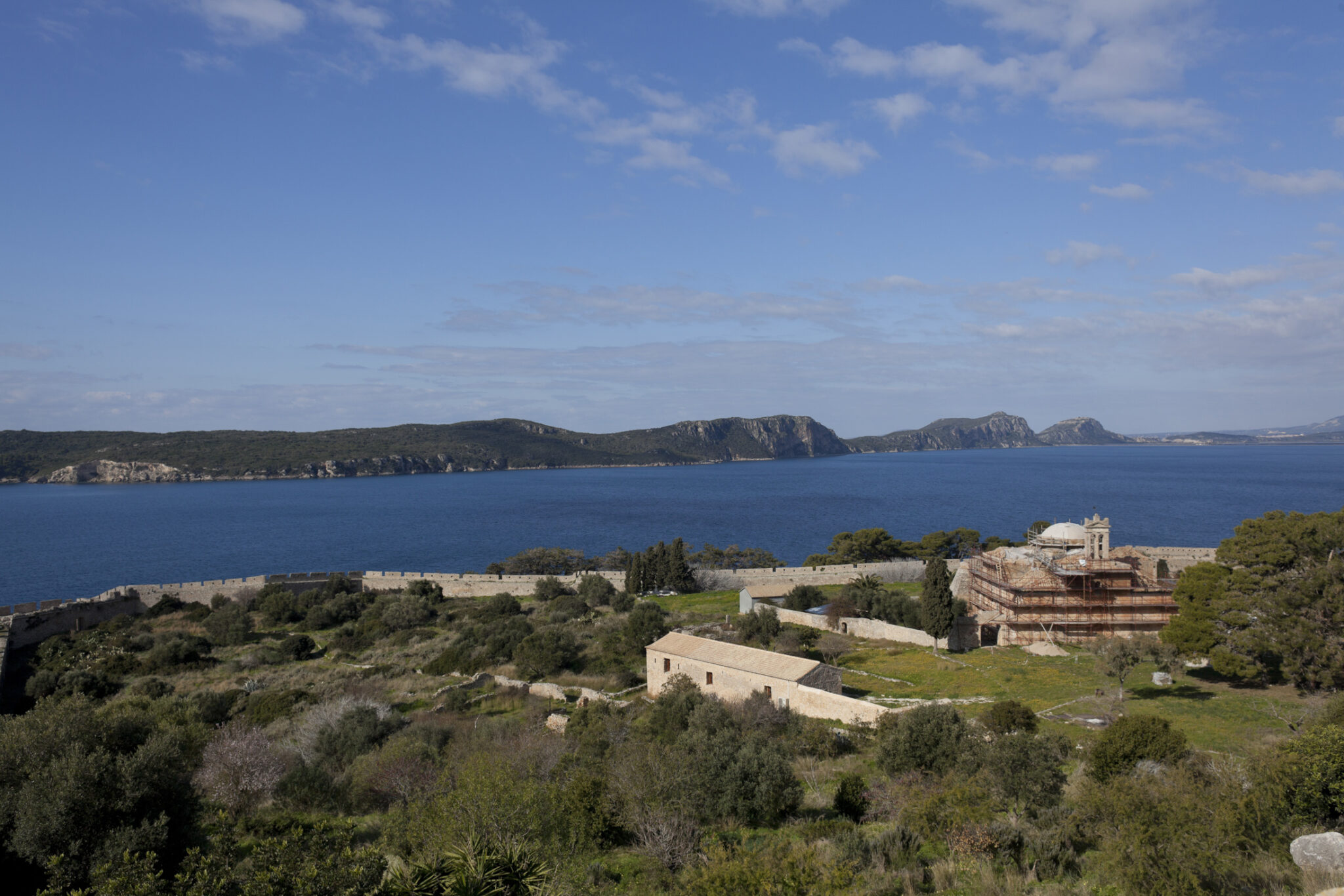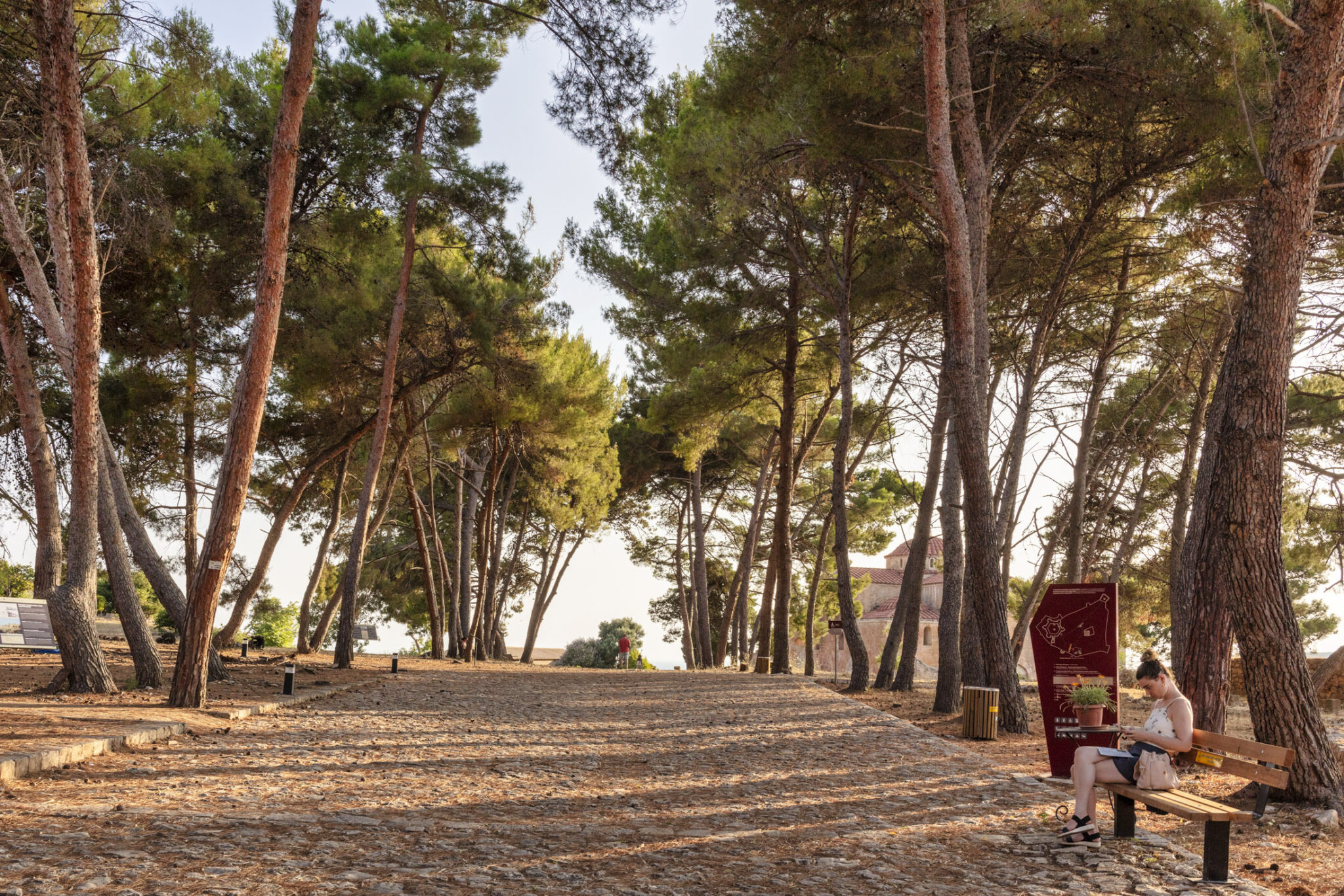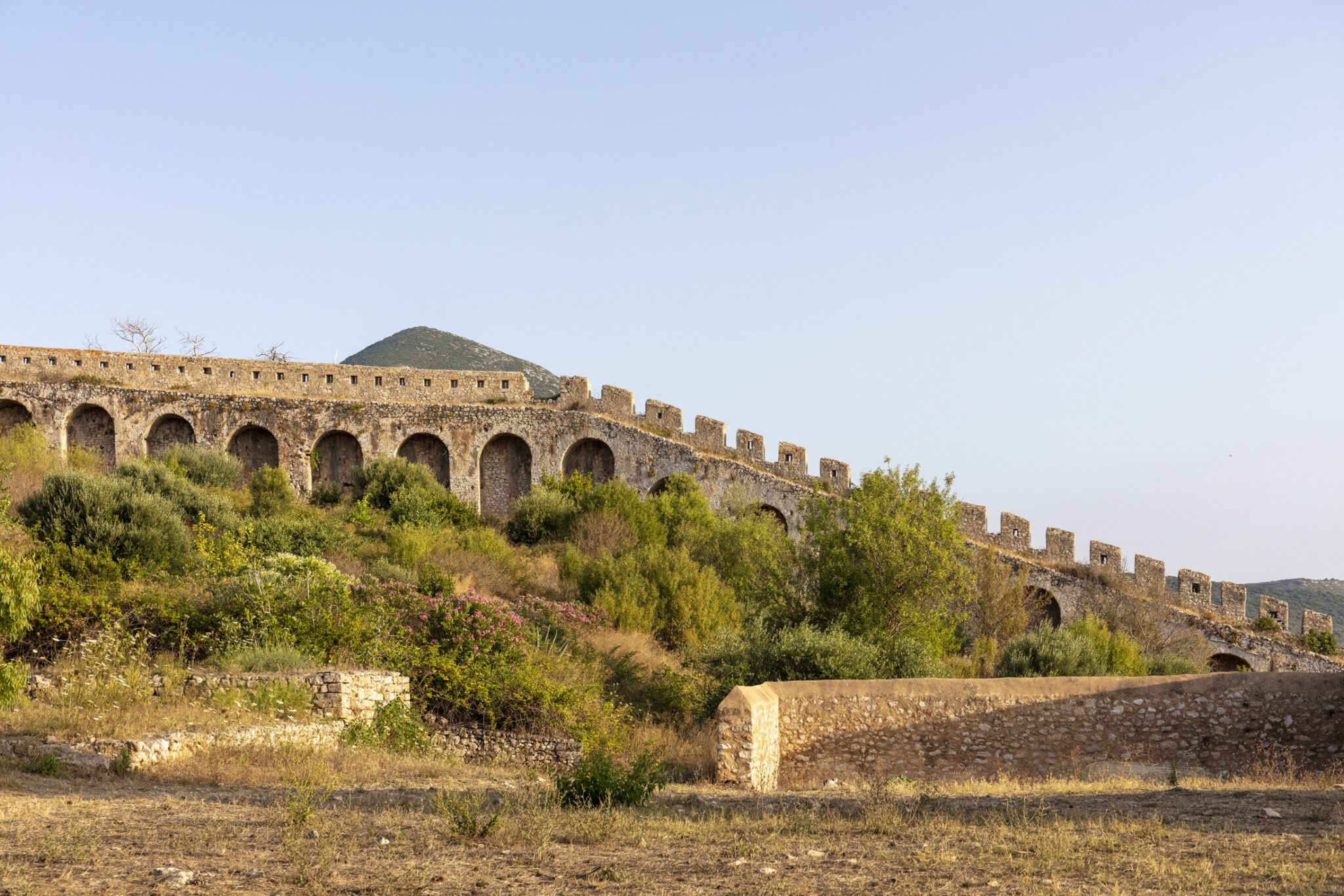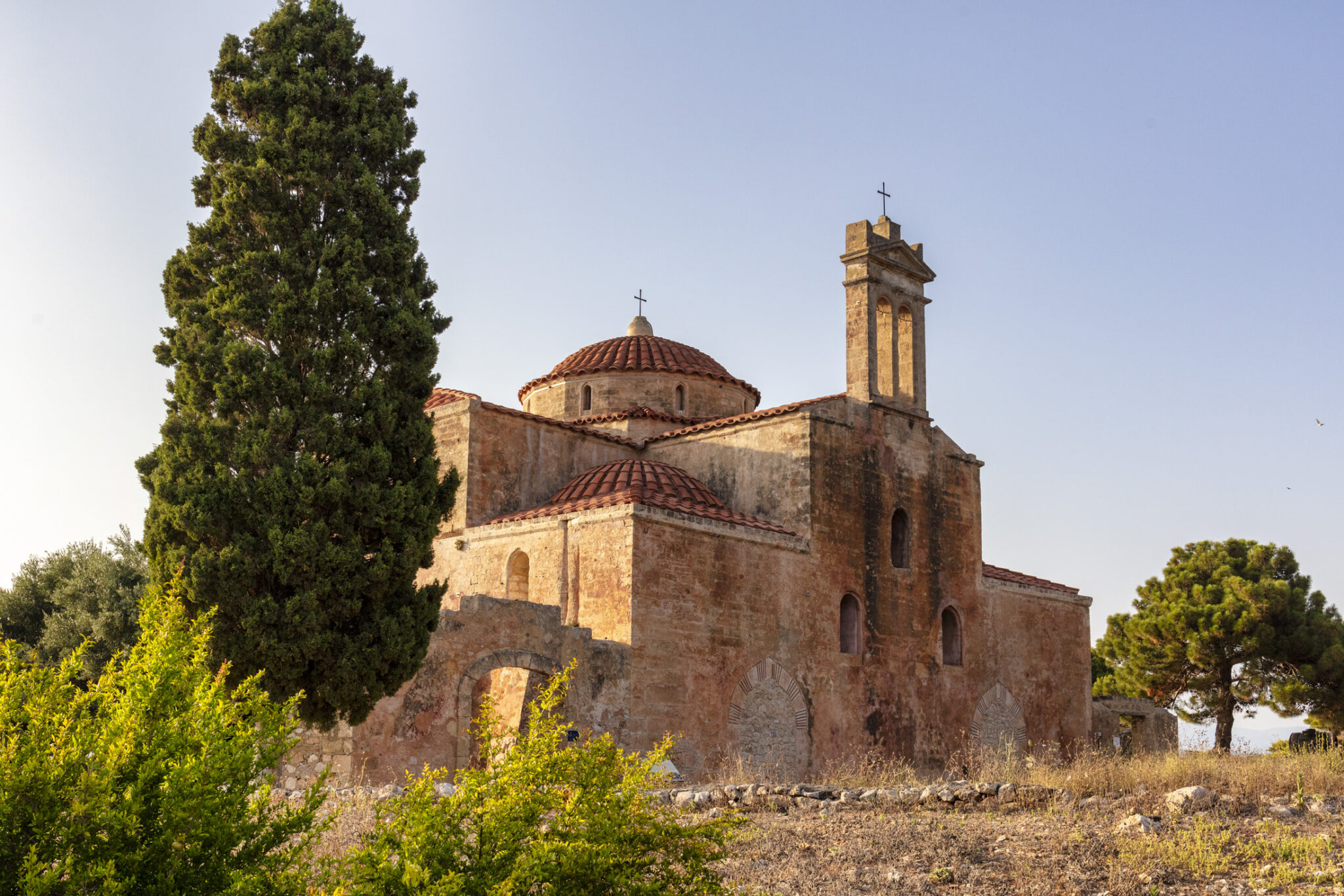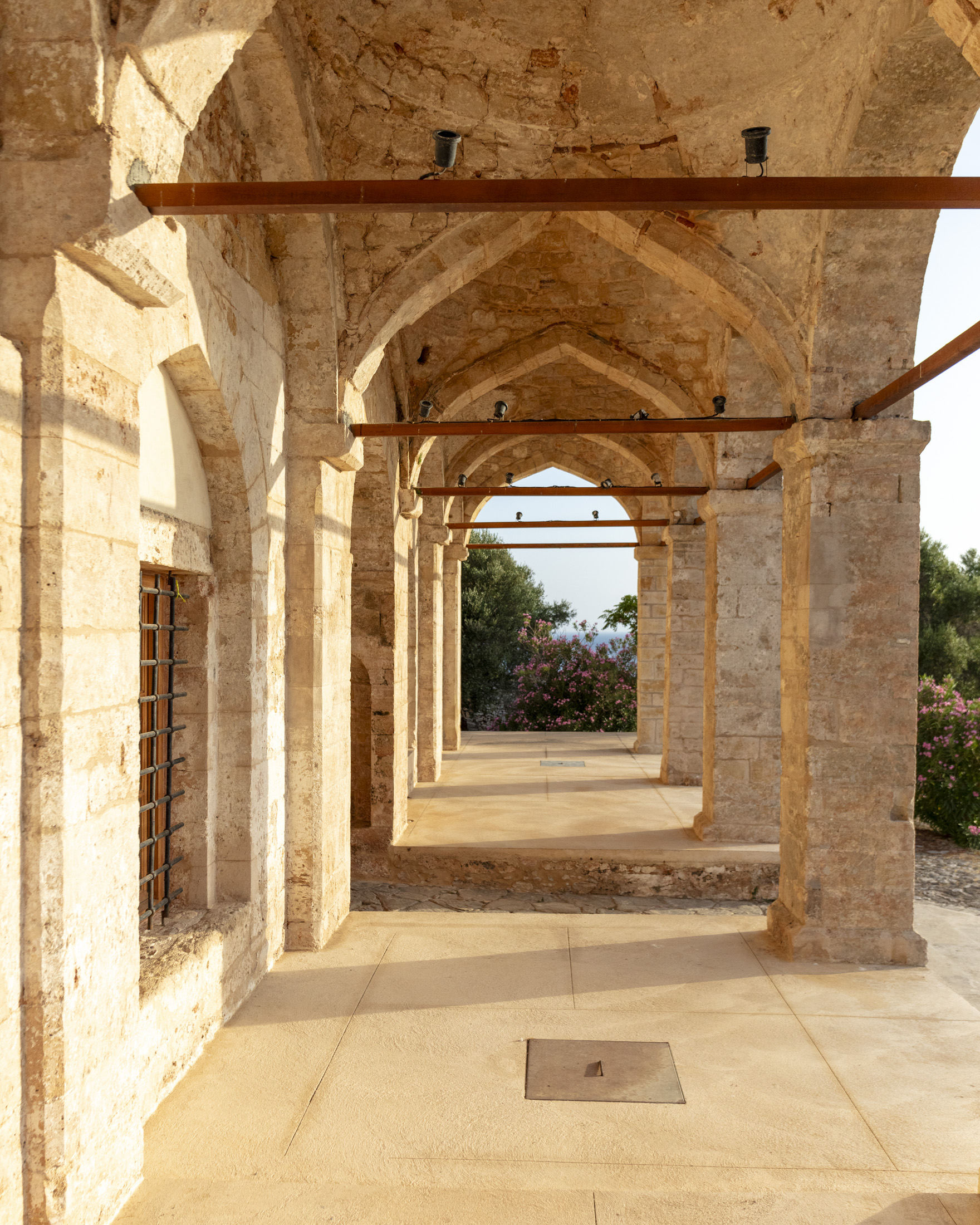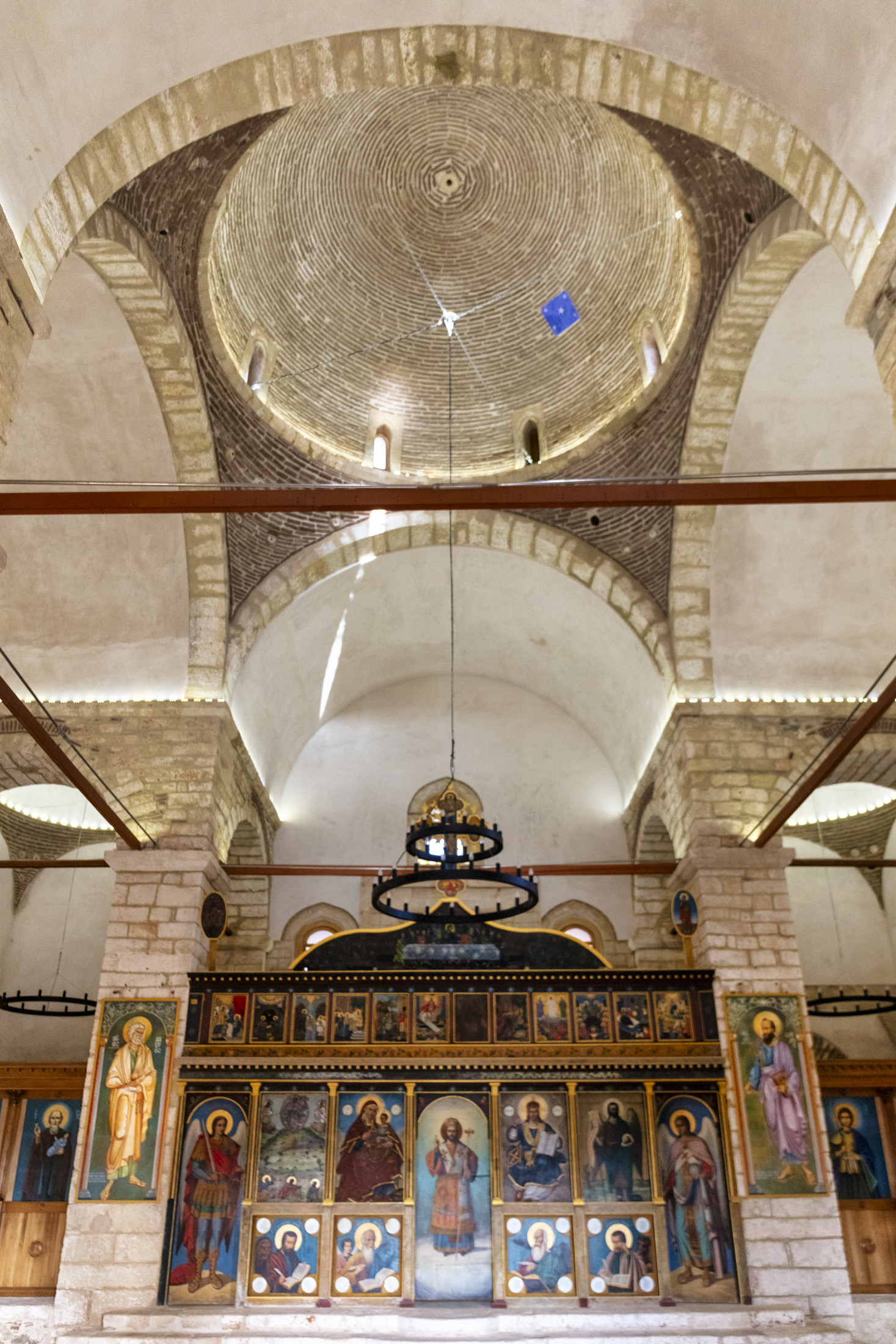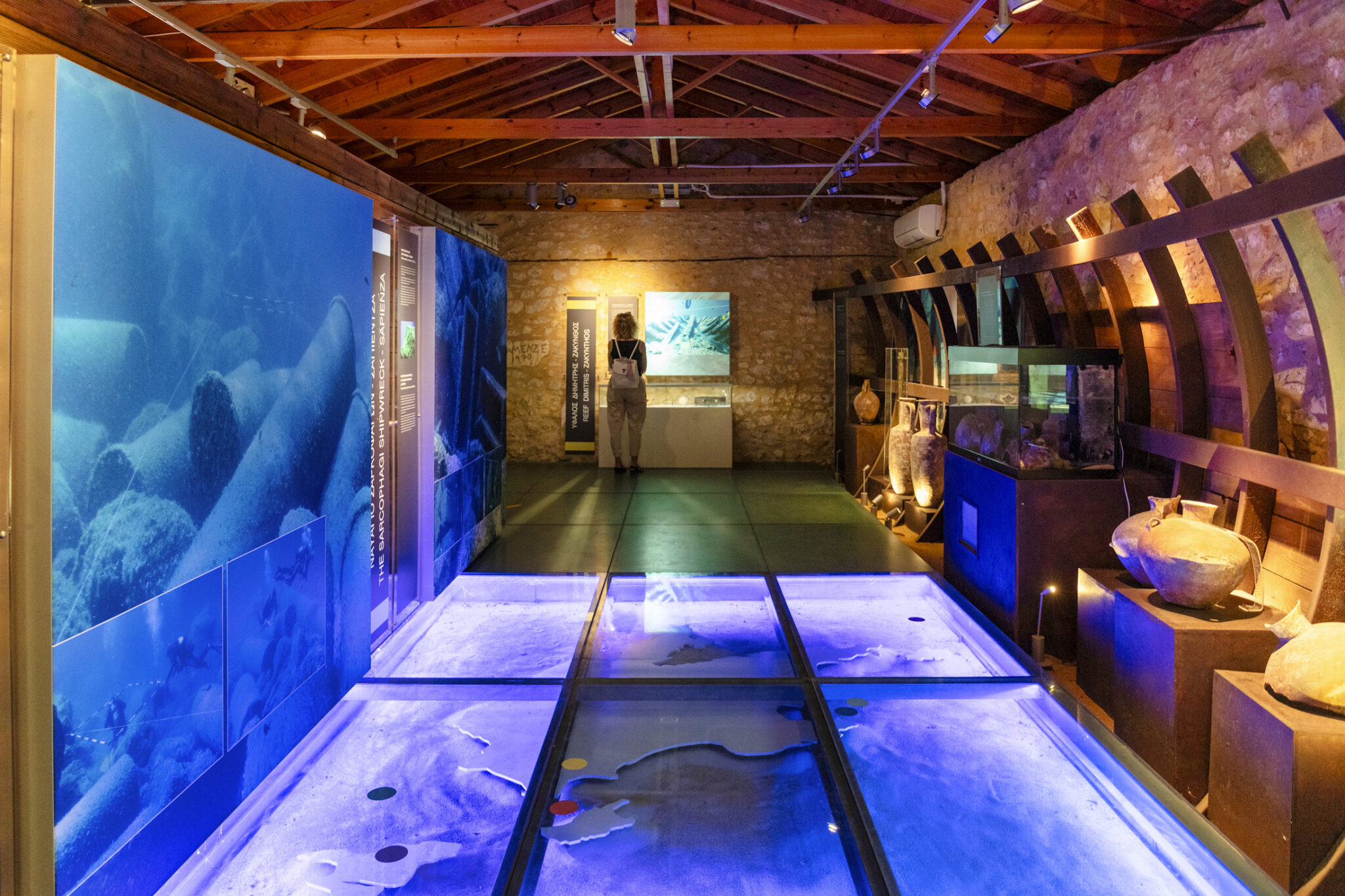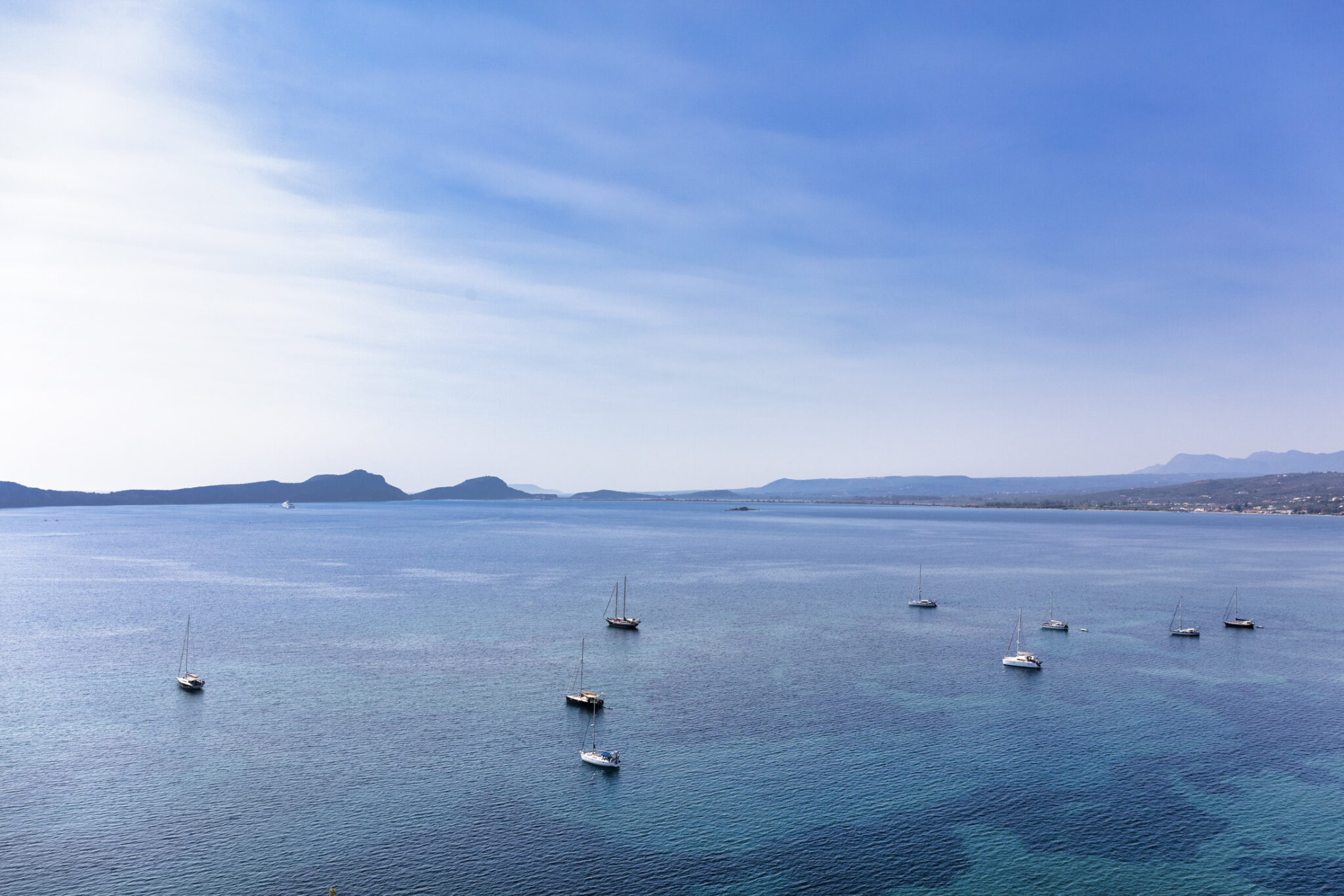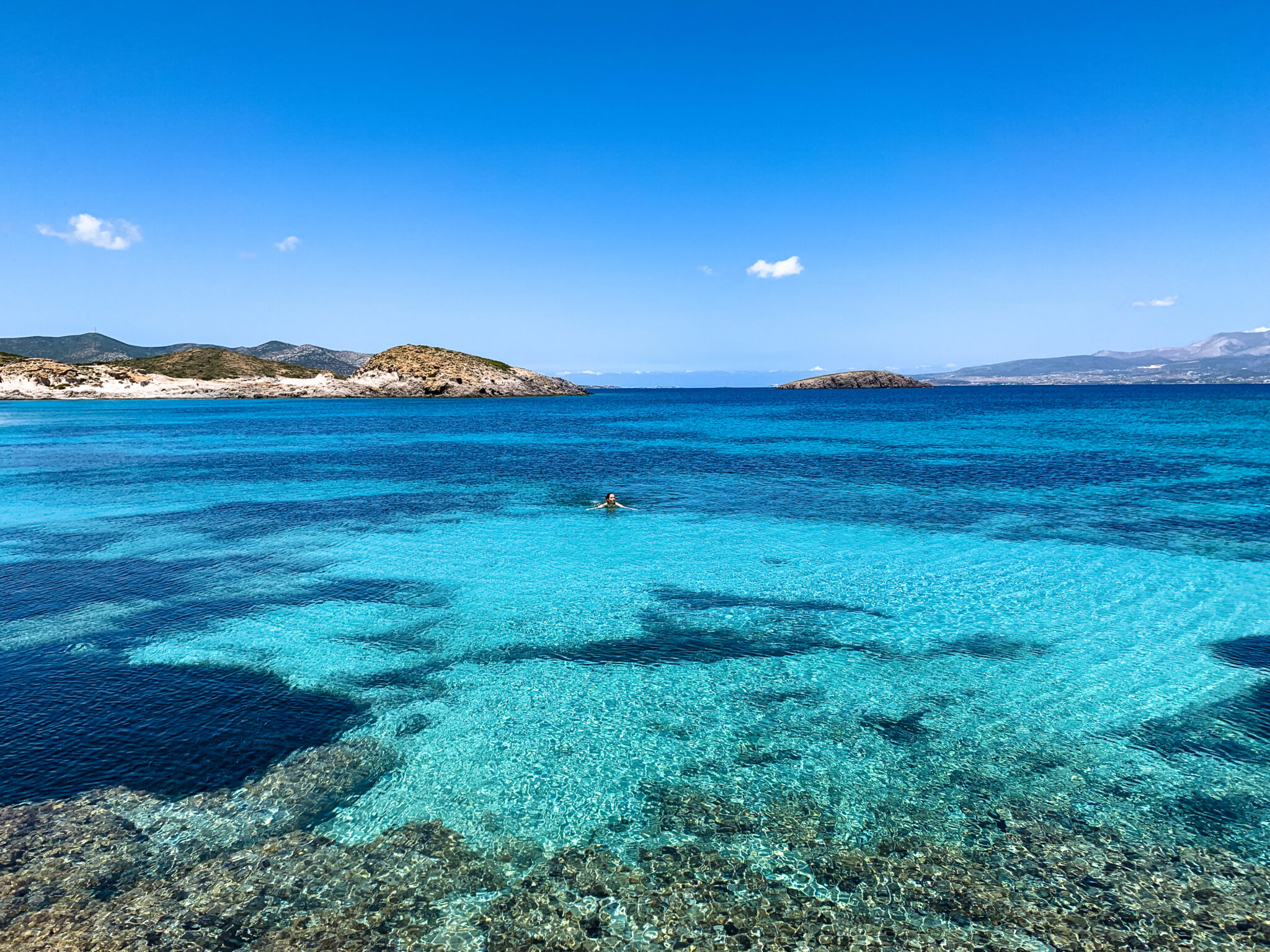Relaxing beneath the shade of towering plane trees, we relish not only their cool embrace but also a delectable galaktoboureko, a treat for which the “Krinos” patisserie is renowned, maintaining the same recipe since 1937. Around us, locals gathered in groups discuss politics, the weather, and us the tourists, who are beginning to fill their quaint town.
We find ourselves in Pylos of Messenia, at the grand and picturesque Trion Navarchon Square, brimming with cafes and restaurants and encircled by a variety of shops and services. Stretching out before us is Navarino Bay, one of the world’s most expansive natural harbours – with depths reaching up to 50 metres – and in its encirclement lies the islet of Tsichli Baba, flaunting its majestic arch, while the little island of Sphacteria protectively stands guard.
In Pylos, the echoes of the historical naval battle of 1827 still reverberate. On the marble pillar of the town square, with ancient cannons forming its base, one can discern the likenesses of Admirals Codrington, Derigny, and Heyden. Together with the monuments erected on the islets of the bay, they form a tribute to the allied fleets and their leaders, who stood firm against the Turko-Egyptian navy during the 1821 Revolution. Elders would recount tales that, near Sphacteria, on calm days when the sea was tranquil, one could glimpse, deep below, the masts of sunken ships.
The Storied Past of Pylos
Pylos is enchanting. You realise it the moment you lay eyes upon it, along with the Neokastro, as you navigate the winding road descending from Gialova towards the harbour. It’s no coincidence that due to its prime position on the western coasts of the Peloponnese, Homer’s “sandy” Pylos – from where King Nestor set sail with his fleet towards Troy – was the apple of discord since ancient times.
At Sphacteria, for instance, the Athenians clashed with the Spartans. As epochs rolled on, Pylos saw the footfalls of Romans, Franks, Venetians, Spaniards from Navarre, Turks, Albanians, and Egyptians. Majestic landmarks in the vicinity, such as Nestor’s palace and the domed Mycenaean tombs at Englianos, the tomb of Thrasymedes above Voidokilia, the Hellenistic and Roman tombs at Divari, the medieval aqueducts, and the Neokastro, are but a few remnants of the region’s illustrious history.
A Visit to Niokastro
“Hurry, you don’t have much time; the castle will close soon!” With the guard’s warning echoing in our ears, we rush to explore and photograph as many artefacts of the famed Niokastro as possible. And there are many.
The Niokastro, or New Navarino, is remarkably well-preserved and easily navigable, with cobbled pathways guiding visitors throughout. From its battlements, the view of the Navarino Bay is simply outstanding.
Constructed at the foot of Mount Agios Nikolaos, this fortress covers roughly 70,000 sq. metres. Erected by the Ottomans in 1573, a mere two years after their defeat at the Battle of Nafpaktos, it served as a sanctuary for the Turkish populace. With its construction, the Ottomans aimed to control the southern entrance to the Navarino Bay and, by extension, the crucial East-West maritime trade route. Its name was chosen to distinguish it from the older Venetian fort, Paleonavarino (Old Castle), which had been abandoned.
The Ottomans held sway over Niokastro until 1686, when the formidable Francesco Morosini and his Venetians took command. However, this Venetian chapter was short-lived, as the Ottomans regained control in 1715, evicting their adversaries. By 1828, following the withdrawal of Ibrahim Pasha’s forces from the Peloponnese, the French, led by the astute General Nicolas-Joseph Maison, liberated it. Following these tumultuous events, the modern town of Pylos began its ascendancy post-1830, developing outside the fortress walls.
The defining architectural feature of Niokastro was influenced by the establishment of gunpowder and firearms by 1573. The fortification architecture of the era seamlessly adapted to these advancements. The Ottomans, equipped with expert engineers and architects, meticulously studied and implemented these new-age rules. As a result, Niokastro’s design mirrored the quintessential Mediterranean fortresses of its time, encompassing a main enclosure to protect its inhabitants and a secondary, hexagonal-shaped fort guarding the acropolis.
These walls, strategically designed to be both low and stout, were constructed to endure relentless cannon assaults. Entrance was granted via the southeast, through Zematistra – the imposing main gate. On this same side, the acropolis was erected, fortified with a dry moat on its exterior and six pentagonal bastions, mathematically calculated for optimal artillery usage. The bastions of the outer enclosure bear distinct names: Santa Maria, Makrygianni, Vergas, and Santa Barba.
The Majestic Metamorphosis Tou Sotira
Dominating the vast area where once a settlement stood, is the church of the Metamorphosis Tou Sotira (of the Saviour). Constructed during the reign of Sultan Murat III, it originally served as an Ottoman mosque. Subsequently, during Venetian occupation led by Morosini, it functioned as a Catholic church dedicated to St. Vitus (1686-1715). By the time of the Orlov Revolt in April 1770, it had transformed into an Orthodox sanctuary.
Excavations have revealed five distinct construction phases. This significant monument boasts an octagonal dome and consists of a narthex and main church, encompassed on three sides by an enclosure. Notably, in the southwest corner, a minaret still stands. Restoration work carried out between 2011-15 by the Directorate of Byzantine and Post-Byzantine Antiquities has highlighted its original architectural form. The church’s minimalist interior is particularly captivating, emphasising the coexistence of Orthodox and Ottoman architectural elements. It is also deeply evocative, bathed in beams of natural light, and at its heart is a preserved wooden altar, adorned with images of saints.
The Exhibitions of Underwater Antiquities
The Pasha Building, erected between the 17th and 18th centuries, is believed to have been utilised as a prison during the German and Italian occupations. Within its confines, masterfully illuminated to evoke the sense of a seabed, with exquisite architecture, fragments of sculptures, amphoras, and informative placards, one is greeted by the exhibition “Submerged Journeys, Human Explorations: Traces in the Seas of the Peloponnese”. This showcases shipwrecks with columns and amphoras discovered near Sapienza of the Messenian Oinoussae, as well as findings from wrecks near Lixouri of Kefalonia and Dimitri reef of Zakynthos.
In a smaller space, within the bastion of Makrygianni, visitors can also immerse themselves in the “Ancient Submerged Cities of Southern Peloponnese”. It provides insight and artefacts related to the submerged state in Pavlopetri (near Elafonisos), Plytra, and Methoni. Both exhibitions were curated by the Ephorate of Underwater Antiquities and the artefacts on display are rooted in their research and findings.
The Maiźonos Barracks and the Archaeological Museum of Pylos
The striking two-storey stone structure with its double-pitched roof, bearing the name of the aforementioned French general, was constructed by his expeditionary force post-1828, following the definitive departure of the Turko-Egyptians from Pylos. It is speculated to have housed various military personnel during the time when Niokastro served as a training centre for new recruits, post the successful outcome of the 1821 Revolution and the establishment of the Greek state.
Later on, it took on a role as an administrative centre, while the acropolis was repurposed into a prison for high-security inmates. Now, the noteworthy Archaeological Museum of Pylos is comfortably housed within the precincts of these former barracks. Through its “In the Footsteps of Pylos” collection, the museum paints a comprehensive historical portrait of the entire wider region, spanning from prehistory right up to the Roman era. Both Niokastro and the museum, along with its exhibits, are open daily except for Tuesdays, from 8:00 in the morning till 8:00 in the evening.
Read also:
Paleokastro Navarino: An Enchanting Castle in Pylos, Peloponnese
Finikounda: One of the Peloponnese’s most Beautiful Seaside Settings
Messenia: Medieval castles, traditional flavours, wonderful sea



